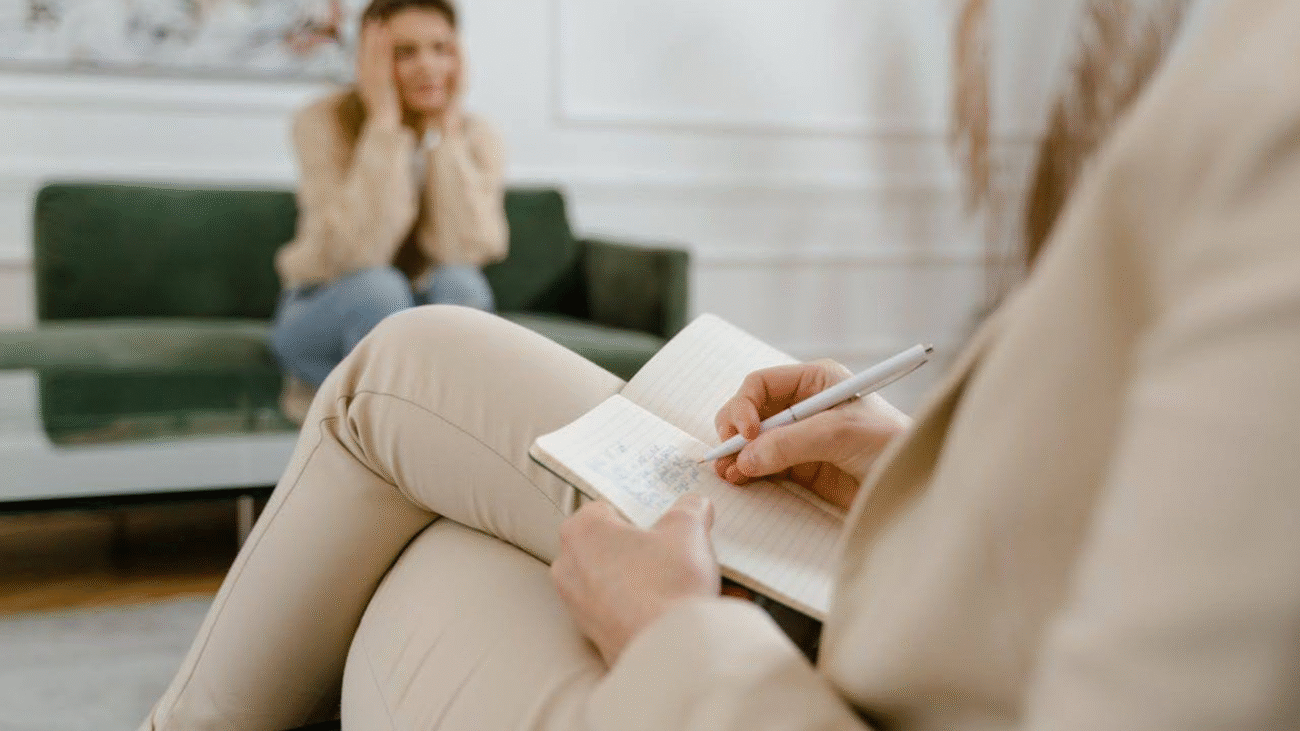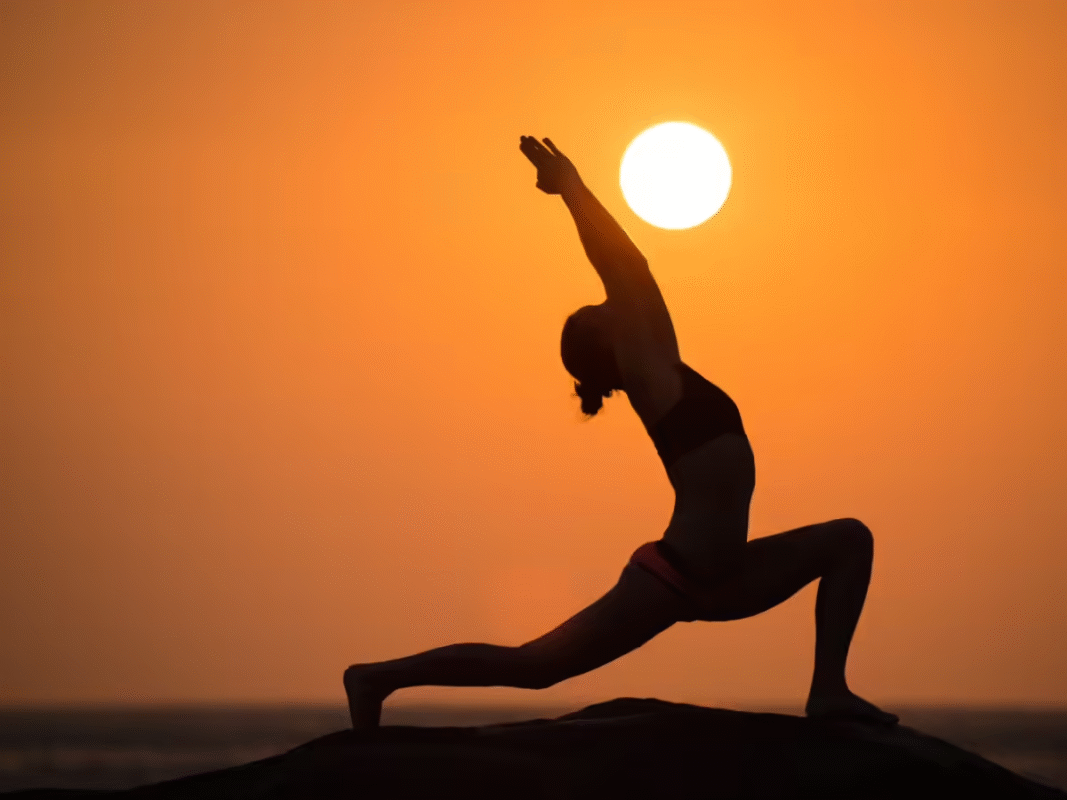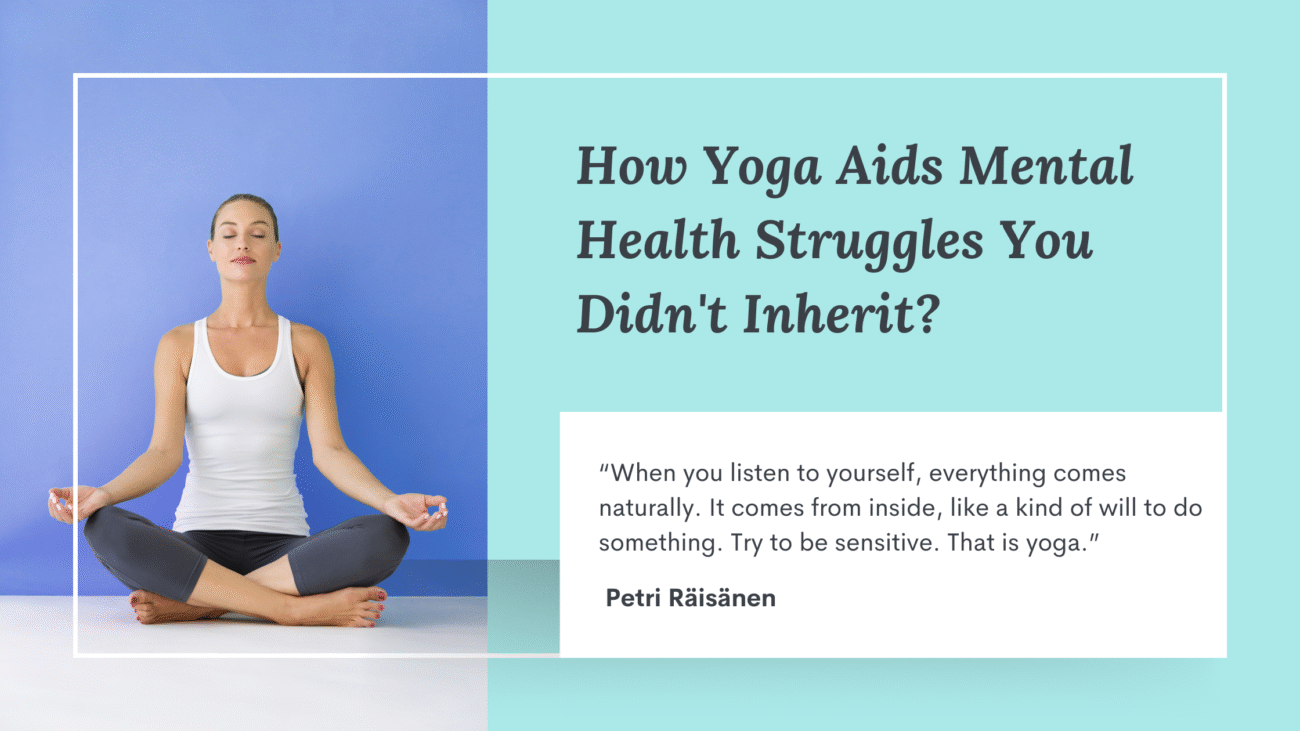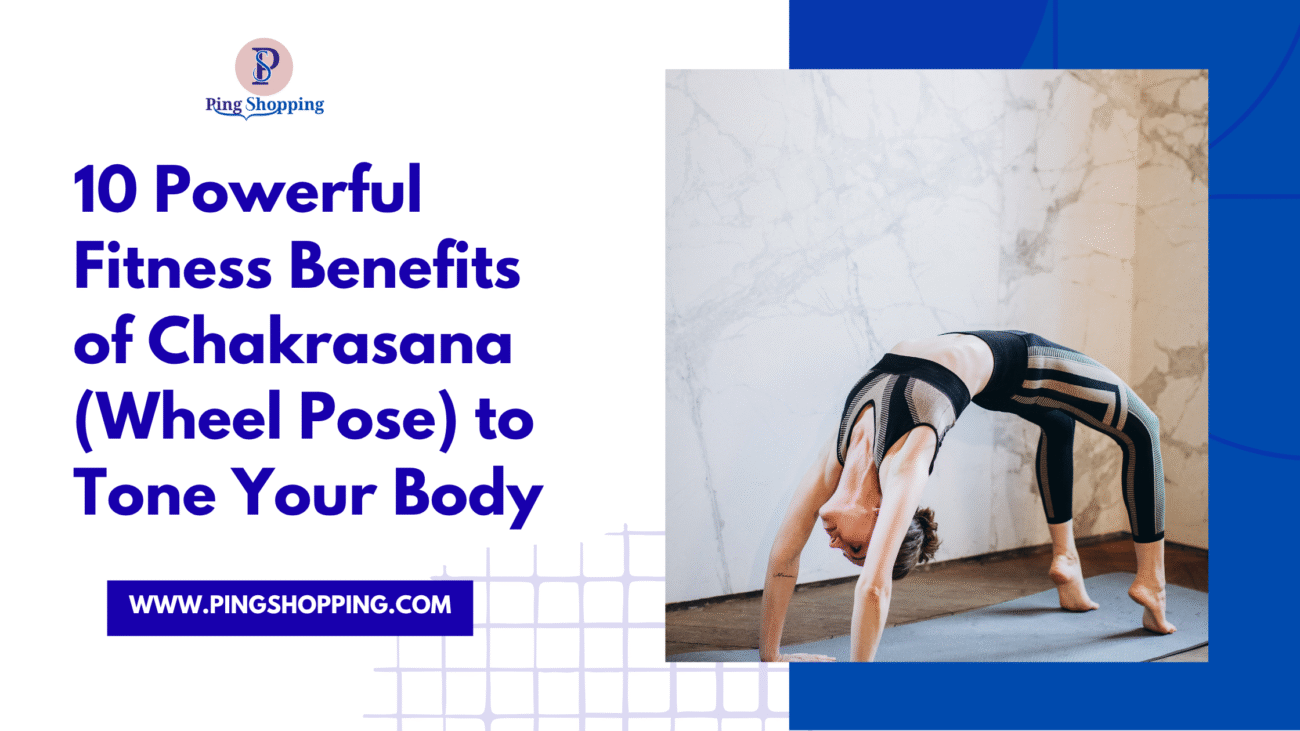Mental health issues are inherited? A lot of times, people wonder whether they are associated with our genes or not. Although it can possess a certain risk but the ultimate reason behind your worsening mental health can be experience and environment. Although therapy and medication continue to be mainstays of treatment, yoga has become a robust, research-supported addition to assist in restoring mental health from the inside out. Thus, in this article, we will explore various ways in which aids to deal with mental health struggles.

Table of Contents
Depression
Depression is one of the most prevalent mental illness issues that affects roughly 1 out of every 10 U.S. adults annually. Globally, it is estimated that nearly 1 out of every 8 individuals has a diagnosable mental disorder. Because of this condition, victims go through continual low mood, loss of interest, lack of energy, etc. Not only on the psychological front, but consequences are also witnessed on the physical front.
Science Behind Yoga & Depression
Meta-analyses from randomized controlled trials indicate large reductions in depressive symptoms with yoga—standardized mean differences of approximately −0.69. A particular 12-week RCT identified Iyengar yoga with coherent breathing as effective in reducing suicidal ideation in major depressive disorders.
How does yoga aid in tackling depression?
- Yoga establishes a strong connection between the prefrontal cortex and limbic system. Ultimately, it enhances your mood too.
- Being consistent in yoga practice will lead to reduced inflammation and cortisol.
- Try to do asanas, pranayama, and meditation to enhance the endurance ability for emotional pain.
Practices Recommended for Depression
- Sun Salutations (Surya Namaskar): It is performed in series to heat the body, open the heart, and lift your energy.
- Bridge Pose (Setu Bandhasana): This is best to uplift the emotions and energy flow. The bridge pose also opens the chest and stimulates the heart center.
- Supported Fish Pose (Matsyasana): It’s like a backbend heart-opener that will lengthen the front body and also reduce fatigue and depressive symptoms.
- Coherent Breathing (5–6 seconds inhale and exhale): In this, you simply inhale and exhale for 5-6 seconds to balance the autonomic nervous system.
2. Anxiety (GAD & Panic Disorder)

Anxiety is the most commonly diagnosed mental disorder in adults. Roughly 1 in 5 US adults experiences symptoms of GAD, PD, social anxiety, or phobia in a typical year—often alongside depression. Symptoms usually include worries, rapid heartbeat, shaking, sweating, and digestive issues that are severe enough to cause physical discomfort and loss of function.
How Yoga Calms Anxiety?
Yoga for anxiety can be beneficial because:
- Parasympathetic Activation: It’s all about the vagus nerve—breathwork and contemplative movement sets the body into a calm, restorative state.
- Mindfulness and Presence: Conscious, present determination to notice the breath and body compels the awareness out from anxious loops and circles to here and now.
- Stress Hormone Reduction: Regular practice will save you from cortisol
- Enhanced Resilience: The Practice of being present with discomfort or uncertainty builds emotional resilience.
Recommended Practices
- Child’s Pose (Balasana): It’s one of the most grounding postures to wake up your body and shut down the intensity of anxiety.
- Legs-Up-the-Wall (Viparita Karani): An inversion to calm the nervous system, slow down heart rate, and release tension.
- Cat–Cow (Marjaryasana–Bitilasana): Builds a rhythmic breath-body link while reducing muscular tension and stress too.
- Alternate Nostril Breathing (Nadi Shodhana): This equilibrates the brain hemispheres and controls the arousal in your nervous system.
3. Post-Traumatic Stress Disorder (PTSD)
Yoga’s Role in PTSD Recovery

PTSD is a significant mental health challenge that arises out of mental trauma. Lifetime prevalence rates suggest 10–12% of women and 5–6% of men experience PTSD. Symptoms include intrusive memories, hypervigilance, avoidance, emotional numbing, and sleep disturbance.
All the clinical trials, especially among veterans, showed that continuing yoga for 16 weeks will reduce PTSD symptoms and lead to improved sleep and emotional regulation. Yoga encourages:
- Interoception – The ability to perceive internal bodily state to figure out trauma processing and grounding.
- Theta Brainwave Activation – By utilizing slow and rhythmic breathing, it can trigger relaxation and emotional regulation.
- Safe Container – Slow, gradual practice creates stability and predictability—essential for trauma survivors.
Recommended Practices
- Grounding Flow (Tree Pose, Warrior II, etc.): Gives overall stability and strength to your body and mind.
- Yoga Nidra: Guided relaxation of the body-mind that creates inner safety and awareness.
- Breath Retention (Antar or Kumbhaka): Will aware you about your body and emotions in an effective way.
- Healing Mantra Chant (“So Hum”): Repeated silently on the breath to establish inner peace and stability.
4. Obsessive-Compulsive Disorder (OCD)

OCD occurs in 2–3% of individuals at some time during their lives, beginning in late adolescence or early adulthood. It is marked by intrusive, unwanted thoughts (obsessions) and repetitive rituals (compulsions) to ward off anxiety. Symptoms can severely affect daily functioning and emotional status.
Yoga’s Benefits in OCD
Although more research is needed, yoga has been found to decrease compulsive behavior and aid in managing mental health problems of OCD by:
- Shoring Up Frontal Regulation – Strengthening executive function and control of impulses.
- Supporting Mindfulness – Bid adieu to compulsive thinking by keeping you present with the senses.
- Decreasing Stress and Cortisol – Controls overall nervous system reactivity.
Recommended Practices
- Mindful Movement: Slowing, breath-led asanas, where focus is respectfully brought to sensation and alignment.
- Focused Attention Meditation: Breathing counting (inhale and exhale) up to 10, then cycling to develop attention.
- Balancing Poses (e.g., Tree Pose): Needs focused attention and prevents you from getting into obsessive thinking.
5. Insomnia & Stress-Related Sleep Disturbances

Insomnia and other sleep disorders are often accompanied by mental health issues such as anxiety, depression, and PTSD. Chronic sleep loss increases stress, detracts from mental functioning, and increases up risk of bodily disease.
Yoga’s Role in Better Sleep
Several studies confirm that yoga:
- Lowers the production of stress hormone ‘cortisol’ in your body to reset sleep-wake cycles.
- Keeps your mind calm to maintain parasympathetic tone
- Making gentle stretches helps in the physical release of tension before going to sleep.
Ideal Bedtime Routine
- Restorative Bedtime Flow: Legs-Up-the-Wall → Reclined Bound Angle → Supine Twist → Savasana
- 3-Part Yogic Breath (Dirga Pranayama): Breathe in slowly into the belly, ribcage, and upper chest; hold; then exhale completely.
- Gentle Forward Folds: Like Seated Forward Bend or Child’s Pose to let go of tension.
- Body Scan Meditation: Lie awake for several minutes, increasingly relaxing each region of the body.
Why Yoga Works: Integrating Science and Experience
Yoga acts as a strong healer for your body and tackles mental health issues. The combination of physical, psychological, and neurological processes used will free it from all mental struggles.

1. Neuroplasticity & Brain Health
Yoga enables neuroplasticity and eases gray matter development, especially in the hippocampus and prefrontal cortex. As a result, your body reduces amygdala activity to cope with stress.
2. Rebalancing the Autonomic Nervous System
Voluntary breathing and relaxation shift your body from sympathetic to parasympathetic activity. In this, vagus nerve activation helps a lot.
3. Hormonal & Inflammatory Regulation
According to the research, yoga will reduce cortisol and pro-inflammatory indicators such as CRP and IL-6. Both of them are responsible for the mental health struggles, and yoga is the best solution to deal with them.
4. Mindfulness & Emotional Awareness
Your quietness and concentration can be preserved better with the yoga exercises. It activates mindfulness and emotional awareness to know your body, mind, and soul closely.
5. Physical Release of Tension
If stress and trauma and building tensions in any part of your body, yoga will help to release them. Consequently, the body will decrease those stress signals passing through the nervous system.
Safety & Guidance
- Do yoga activities at your own pace instead of starting directly with intense inversions
- Tell your instructors about your mental health history so they can provide better guidance and special exercises to tackle them
- Hire a certified mental health or yoga specialist for your needs
- Remember that Yoga is a complement, not a substitute for professional care. You can use it along with the therapy.
Sample Weekly Plan (60 minutes each)
| Day | Focus Area | Sample Routine Highlights |
| Monday | Depression | Coherent breath → Sun Salutations → Bridge & Fish → Meditation |
| Wednesday | Anxiety | Nadi Shodhana → Cat–Cow → Child’s Pose → Savasana |
| Friday | PTSD-focused | Grounding Flow → Yoga Nidra → Breath retention → Chant |
| Sunday | OCD-supportive | Breath counting → Mindful Asana → Tree Pose → Reflection |
| Daily PM | Insomnia & Sleep | Restorative sequence → Dirga Pranayama → Body scan |
Summary Table: Tracking Yoga’s Impact on Mental Health
| Mental Health Challenge | Yoga Impact Summary | Core Practices |
| Depression | Uplifts mood, enhances brain function, regulates emotion | Coherent Breathing, Sun Salutations, Bridge, Fish Pose |
| Anxiety (GAD/PD) | Calms nervous system, breaks worry cycles, builds resilience | Nadi Shodhana, Child’s Pose, Cat–Cow, Viparita Karani |
| PTSD | Builds grounding, improves emotional control, enhances safety | Grounding Flow, Yoga Nidra, Breath Retention, Chant |
| OCD | Boosts concentration, reduces compulsive patterns | Mindful Asana, Breath Counting, Balancing Poses |
| Insomnia | Relaxes body, soothes mind, improves sleep quality | Bedtime Restorative Sequence, Dirga Pranayama, Body Scan |
Final Thoughts
Mental Health Challenges are difficult to handle, but you are not alone. Share this article with them to help, and make sure to implement yoga every day in your life. Though yoga is not the appropriate cure, combining it with your therapy can help you in many ways.





